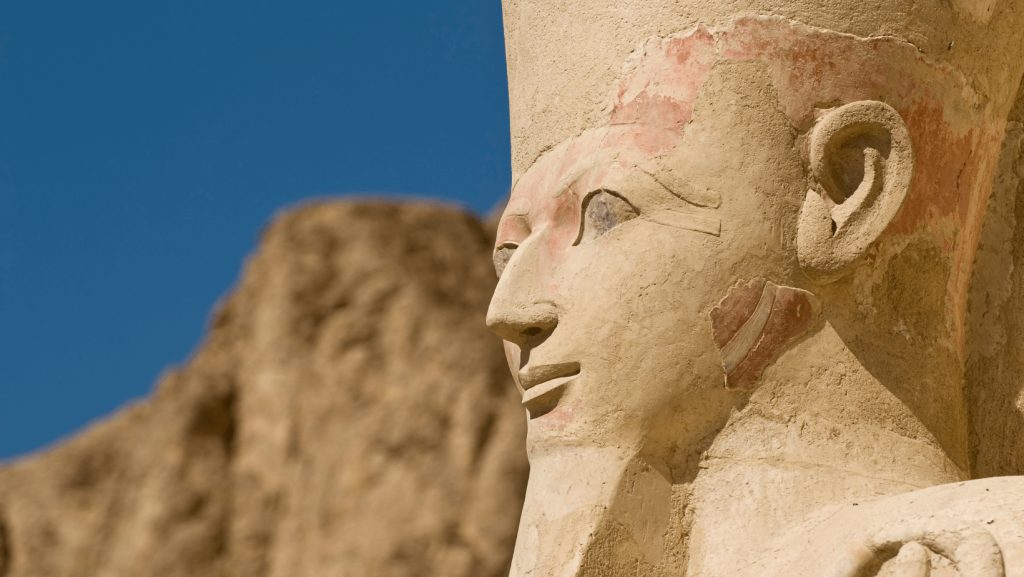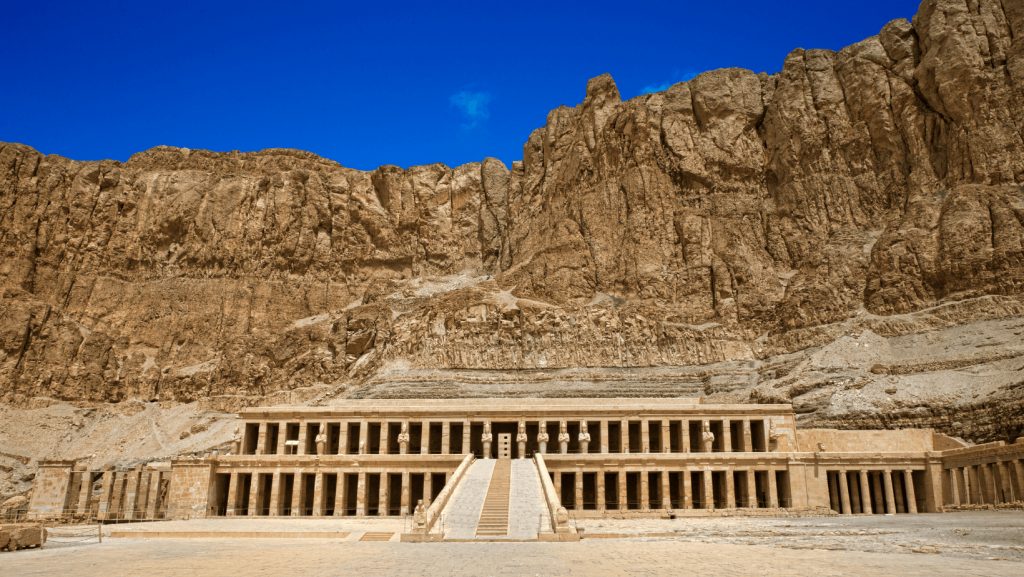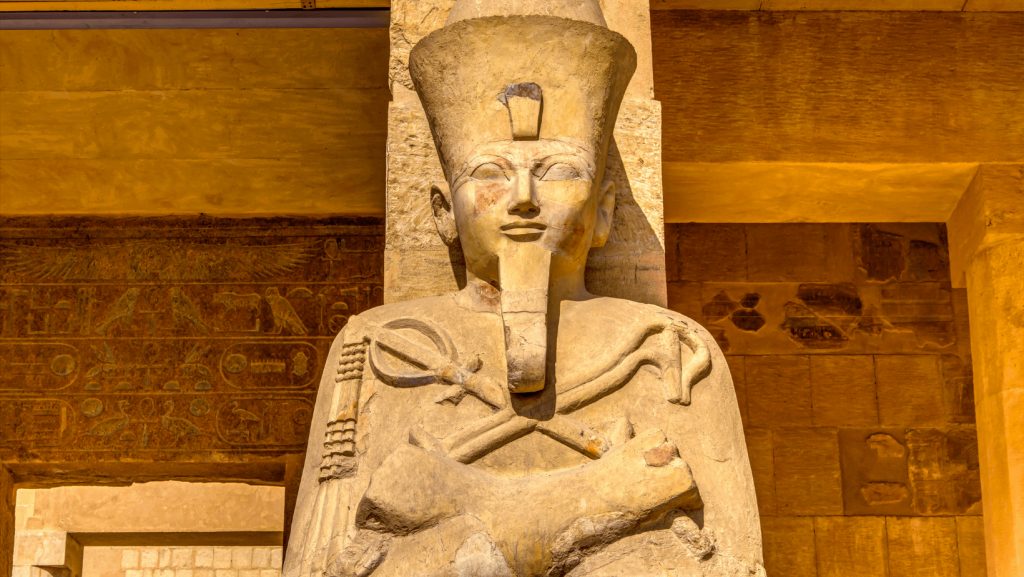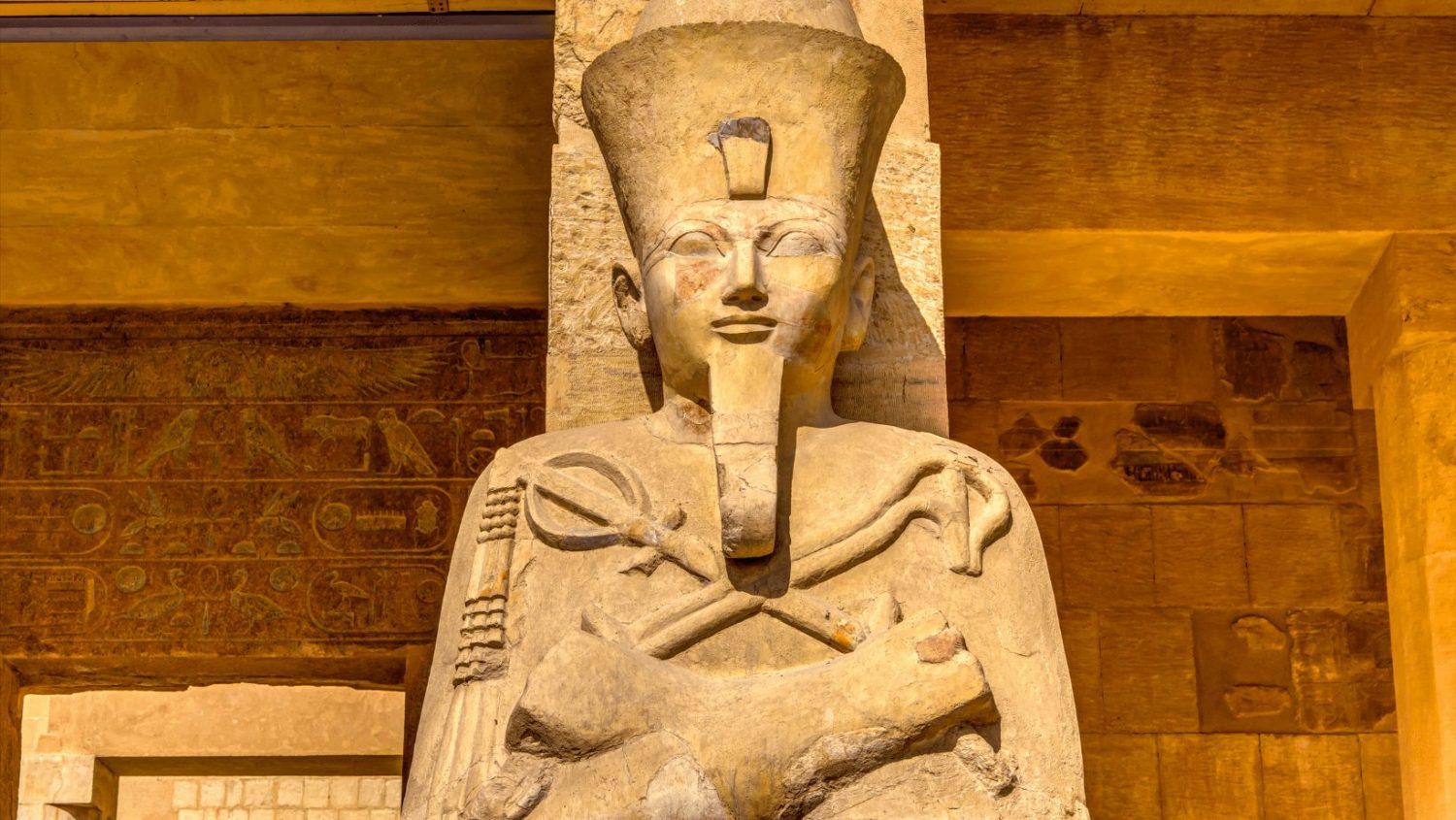
Who Is Hatshepsut?
Hatshepsut was the eldest daughter born to Egyptian Pharaoh Thutmose I and his queen, Ahmes. After her father’s death around 1492 B.C., she became queen of Egypt at the age of 12 when she married her half-brother Thutmose II. Thutmose II died young, around 1479 B.C. He only had one child with Hatshepsut, a daughter named Neferure. As a result, the throne passed to his infant son Thutmose III, who was born to a secondary wife.
According to custom, Hatshepsut began acting as regent, handling affairs of state until her stepson came of age. However, after roughly seven years, she took the unprecedented step of assuming the title and full powers of a pharaoh herself. With this move, she became co-ruler of Egypt with Thutmose III.
In the past, Egyptologists had been quick to attribute her rise to power as a queen’s ambition. But more recently, scholars have pointed to evidence that her move might have been a response to a political crisis, such as a threat from another branch of the royal family. In this case, it’s more likely that Hatshepsut may have been acting to save the throne for her stepson.

Reign As Pharaoh
When she ascended to the throne, Hatshepsut was only the third woman to become pharaoh in 3,000 years of ancient Egyptian history, and the first to attain the full power of the position. One of the most famous Egyptian leaders, Cleopatra, also exercised such power, although not until 14 centuries later.
Knowing that her position of power was controversial, Hatshepsut fought to defend its legitimacy. She emphasized her royal lineage and made claims that her father had named her as his successor. She also ordered that she be portrayed as a male pharaoh in statues and paintings, sporting a beard and muscular frame. These efforts may have been helpful in turning popular opinion in her favor. But the major reason for the acceptance of Hatshepsut’s unprecedented position of power is that she was an incredibly successful pharaoh.
She undertook many ambitious building projects, including the enormous memorial temple at Deir el-Bahri, considered one of the architectural wonders of ancient Egypt. She also authorized a valuable trading expedition to the distant land of Punt which brought back vast riches including ivory, ebony, gold, leopard skins, and incense. Overall, Hatshepsut’s reign was peaceful, as her foreign policy was focused on gaining power and wealth through trade rather than war.

Hatshepsut’s Legacy
It’s believed that Hatshepsut died in her mid-40s, around the year 1458 B.C. She was buried in the Valley of the Kings and had her father’s sarcophagus reburied in her tomb as a final way to legitimize her reign. After her death, her stepson Thutmose III went on to rule alone for roughly 30 more years.
Despite Hatshepsut’s successful time as pharaoh, she was largely unknown until the early 19th century. This is because late in his reign, Thutmose III had nearly all evidence of her reign destroyed. Her statues were torn down, her monuments were defaced, and her name was removed from the official king list. It’s unknown why Thutmose III erased proof of her legacy. But some common theories include that he intended to either erase the example of a powerful female ruler, or close the gap in the dynasty’s line of male succession.
Hatshepsut’s existence was largely lost to history until 1822 when archaeologists were able to decode and read the hieroglyphics on the walls of Deir el-Bahri. This finally provided scholars with the story of her reign. Hatshepsut’s mummy was also recently discovered in 2007, and it’s now housed at the Egyptian Museum in Cairo.
Pop Quiz
(Computer) Mouse

